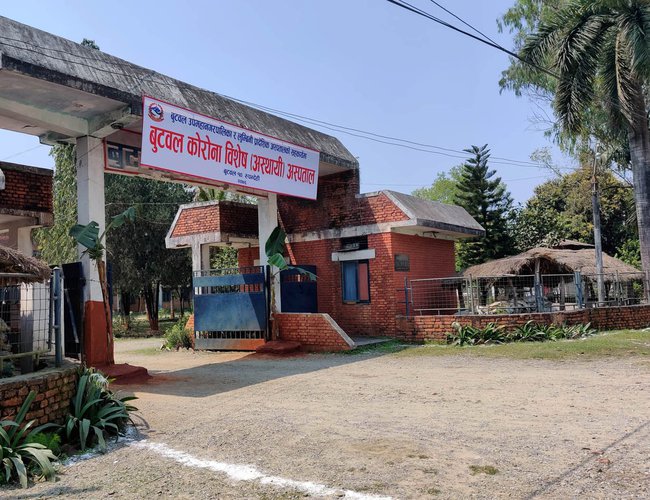

Authors: Sapkota and Kalaunee
Globally countries are looking for better strategies and systems that could respond to COVID-19 pandemic in a more coordinated and seamless way. Discussion on early estimates of indirect effects of this pandemic had already projected additional morbidity and mortality especially among the vulnerable populations- children and women. How can a country respond to COVID-19 outbreak while maintaining essential health services- is a burning question to all? Integrated healthcare could be an answer to this. Integrated care models have been developed to respond to the increasing chronicity and co-morbidity among the population. Coming through the paradigm shift of aging population to the global burden of disease towards non-communicable diseases to COVID-19 pandemic this year, the relevance of integrated health care could not be stressed enough, be it for early identification of COVID-19 case or for contact tracing, isolation and quarantine both at the health facility and community levels.
Focusing strategies on quarantine, isolation, diagnostics and therapeutics during the time of COVID-19 is just not enough. Having a health care system that connects health facilities with the community and with each household is essential for COVID-19 response to embed all coordinated efforts. It is because the adoption of multidisciplinary approaches and strategies goes beyond the organization of providers and requires alignment of health workforce policies at the system-level to maintain the chain of care and management. Typical chains of care and management include screening, testing, treating in a primary care setting, and contact tracing, referrals, quarantine and isolation in a community. Home-based quarantine and isolation are important especially in resource-limited settings like Nepal, where beds for critical care and isolation in hospitals, and rooms for quarantine at the mass level in the community are just not adequate in case of COVID-19 outbreak. These measures can only be adequately managed if we have a system to connect health workers in the facility and those in the community.
Various models of integrated healthcare are in implementation globally from case-specific to population-based. One of such models is being operated in Nepal under public-private partnership (PPP) between the Nepal Government and Nyaya Health Nepal, a non-government organization operating for the last 10 years. We describe here how the team is responding to COVID-19 with the integrated healthcare model, which was built before the COVID-19 outbreak, and has been providing healthcare in remote Nepal focusing on improving reproductive maternal neonatal and child health (RMNCH) and health of patients with chronic disease conditions, including mental health. As we are writing this piece, the Ministry of Health and Population confirmed 134 COVID-19 cases in Nepal. Amidst the nationwide lockdown, which has been imposed since the 24th of March 2020 the risk to COVID-19 continues to grow, highlighting more concrete response steps beyond the healthcare facility. Evidence suggests that a quality continuum of care can be provided when there is a functional healthy facility, which is connected with community-based health care and interventions. The integrated healthcare model that NHN is operating goes beyond that. The two essential components of facility and community care delivery are connected with digital health technology. This technology allows front line health care workers and community health workers to make informed clinical and community care decisions based on the data. These data are collected through electronic health records (called NepalEHR) at the facility level and at the community level using the mobile phone-based CommCare platform.
Facilitates informed decision making with digital technology
Early on, the working model under PPP facilitated our clinical teams to remain in close contact with Ministry of Health and Population (MOHP); receive prompts on COVID-19 related national clinical and non-clinical guidelines; familiarize, train and embed all those guidelines among the clinical and non-clinical team at hospitals, including setting up the fever clinic in our hospitals that serve an average of 300-600 patients in a typical day prior to COVID-19. Continuing Medical Education (CME) classes have been used to update frontline health workers and support team members on relevant clinical guidelines essential for them. However, to maintain social distancing during this period, we have been delivering all training, dissemination sessions and team meetings remotely. Front line health workers were supported by our technical team to build a COVID-19 screening and diagnostic template in their existing Nepal EHR platform as soon as the fever clinic has been initiated. In order to track and monitor daily suspected COVID-19 cases, COVID-19 dashboard that visualizes real-time data on the number of patients checked-in the hospitals’ fever clinic and emergency department, focusing on suspected COVID-19 cases and samples collected for tests and its corresponding test results have been immediately created. This has allowed our hospitals to make informed clinical decisions on a day to day basis, for example, the trend of patients in fever clinics helped to work on triaging, estimate the number of frontline health workers and personal protective equipment (PPE) required.
Builds local response based on the need of the local community through Community Health Workers (CHWs)
CHWs are an integrated part of integrated healthcare delivery one of the key benefits of having CHWsduring this time of pandemic is that they live in the community, and are trusted local resources. Their role in containing an outbreak at the community level has been well demonstrated and documented during the Ebola outbreak in 2014. CHWs have been crucial in connecting health facilities to work with local municipalities to build local responses based on the need of the local community, ultimately supporting to reduce the burden of cases in health facilities. When it comes to COVID-19, there are a lot of potentiality and opportunity within the integrated system to disseminate, train, and mobilize these CHWs to reach out to the unreached population, to actively trace the contacts, to reinforce self-home quarantine and make referrals of suspected cases seamlessly supported by the local government. These steps are important in preventing and breaking the chain of community transmission. In order to do this CHWs should be supported by technology and training. In the case of NHN, since CHWs are already part of integrated health care connected with technology, training is offered to them without much investment. CHWs continue providing critical care remotely, for example, phone counseling, one of the strategies to ensure continuity and prevent overwhelm of clinical services, with a focus on chronic disease conditions, pregnancy, childbirth and postnatal care. These groups are vulnerable in the rural community thus have been the focus to our CHWs during this lockdown restriction. CHWs also talk about any social stigma related to COVID-19 and reinforce home quarantine when there is a requirement during their counseling sessions. Nonetheless, CHWs could do much more than this in case of community outbreak and the team is liaising with local municipalities to expand their care to household level moving beyond remote counseling. It has, however, not been possible due to restrictions in movement, lack of availability of PPE for CHWs, and clarity on these workers’ roles during the outbreak. CHWs work in a community without PPE have been reported in many settings. It is therefore important to incorporate CHWs need for PPE usage while forecasting PPEs in response to COVID-19 at the national and local levels. This is all to emphasize that an integrated response to COVID-19 not only demands clinical protocols, diagnostics, and a supply chain that trickle down to local hospitals, clinics, and healthcare workers but also specific protocols and guidelines for health workers at the community level. These community-level guidelines along with know-how of technology and enrich exposure of local anatomy, a typical challenge at the community level in screening, referral and contact tracing, can easily be overcome.
Provides continuation to essential health services while responding to COVID-19
Another important aspect of care that integrated healthcare offers is the continued provision of essential health services, management of patients, especially with chronic disease conditions and pregnant women. Due to a complete nationwide lockdown and directions from MOHP, hospitals are not offering services from their regular outpatient department. Closure of OPDs could have dire consequences to patients with certain disease conditions (for example, diabetes, hypertension, mental illness) and women who are looking for regular pregnancy appointments that require continuous medication and follow-ups to monitor their clinical conditions and identify danger signs. A collective effort of CHWs and facility care workers ensure medication adherence by facilitating refilling of medication during this unprecedented timing and continued care to pregnant women in the catchment areas we serve. Mental health counseling is offered by in-house Psycho-Social Counselors to such patients is helping to reduce anxiety not only associated with their disease conditions but also related to COVID-19.
Having a functional health facility, which is connected with the community-based health care and interventions can provide a quality continuum of care to its existing patients and also in response to the COVID-19 outbreak. Our learning shows that if we could implement such integrated healthcare platforms more widely throughout the country, issues not only in building clinical and community response during the time of the outbreak but also challenges in data gaps and visualization would have been addressed. Reaching out to community and individuals in creating awareness and administering simple surveys related to outbreaks, amidst lockdown restrictions similar to the one during the COVID-19 outbreak, in future in Nepal and elsewhere would have been much easier, seamless and timely.
Sapkota is director of Implementation Research, Nyaya Health Nepal and Kalaunee is the Executive Director, Nyaya Health Nepal
















